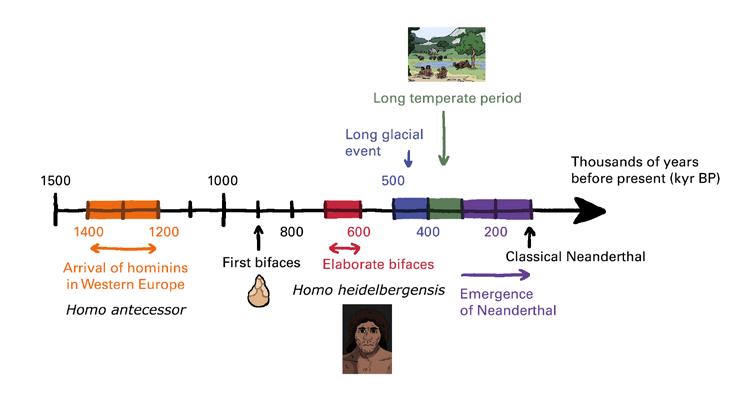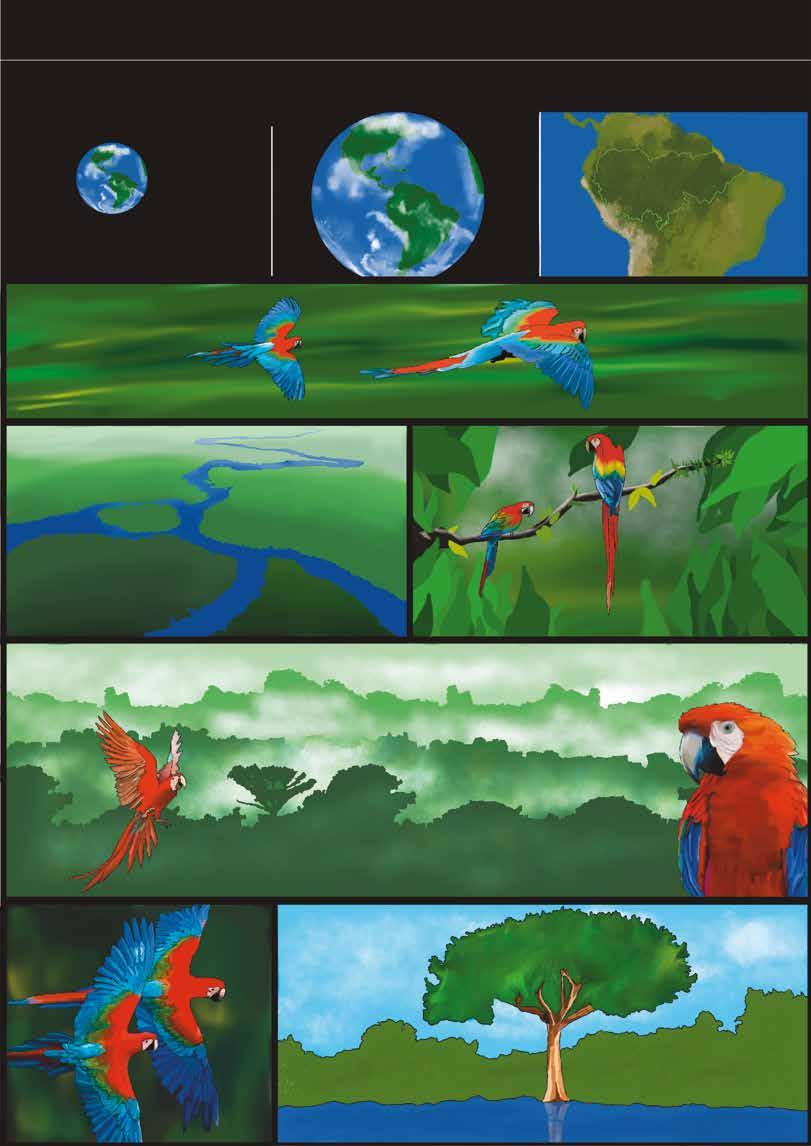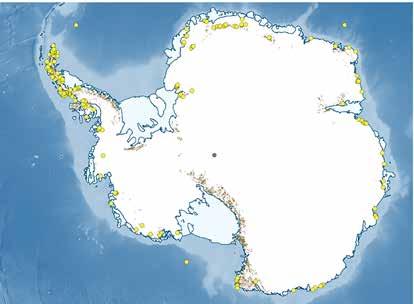doi.org/10.22498/pages.horiz.2.28
ic t c r a t n A t u o b a s u What ca n algae tell t a h w d n A ? o g a s r a e y sea ice 130,000 ? e r u t u f e h t r o f n a e does it m Matthew Chadwick and Claire S. Allen
The Last Interglacial* is a time period that occurred between 130,000 and 116,000 years ago, and was a time when Antarctic temperatures were similar to what is predicted for 2100. The Last Interglacial, therefore, represents an excellent case study to investigate the response of the sensitive components of the Earth system, for instance, the polar ice sheets* (ice on the land which has formed from snowfall) and the seaice* cover (ice on the sea which has formed from freezing seawater), to a warmer-than-today polar climate.
28
PAGES HORIZONS • VOLUME 2 • 2022
Present-day Antarctic winter sea ice covers an area of 18,000,000 km2, nearly twice the size of the USA, and is highly reflective compared to the surface of the ocean. White surfaces (like sea ice) reflect solar energy whereas dark surfaces (like the ocean) absorb solar energy. Therefore, the less sea ice there is, the more solar energy the Earth absorbs and the warmer it gets. Sea ice provides a platform that multiple species of penguins and seals rely upon for resting and breeding. Sea ice is also a surface for microscopic algae to grow on, and, during the yearly melt of winter sea ice, nutrients and meltwater are released, helping to promote large algal blooms in the Southern (or Antarctic) Ocean. Therefore, understanding how Antarctic sea ice responded to warming air and ocean temperatures during the Last Interglacial is important for predicting how it will respond to current global warming, and thereby estimating how much Antarctic sea ice will be lost by 2100, and the domino effect of that loss in reflectivity.














